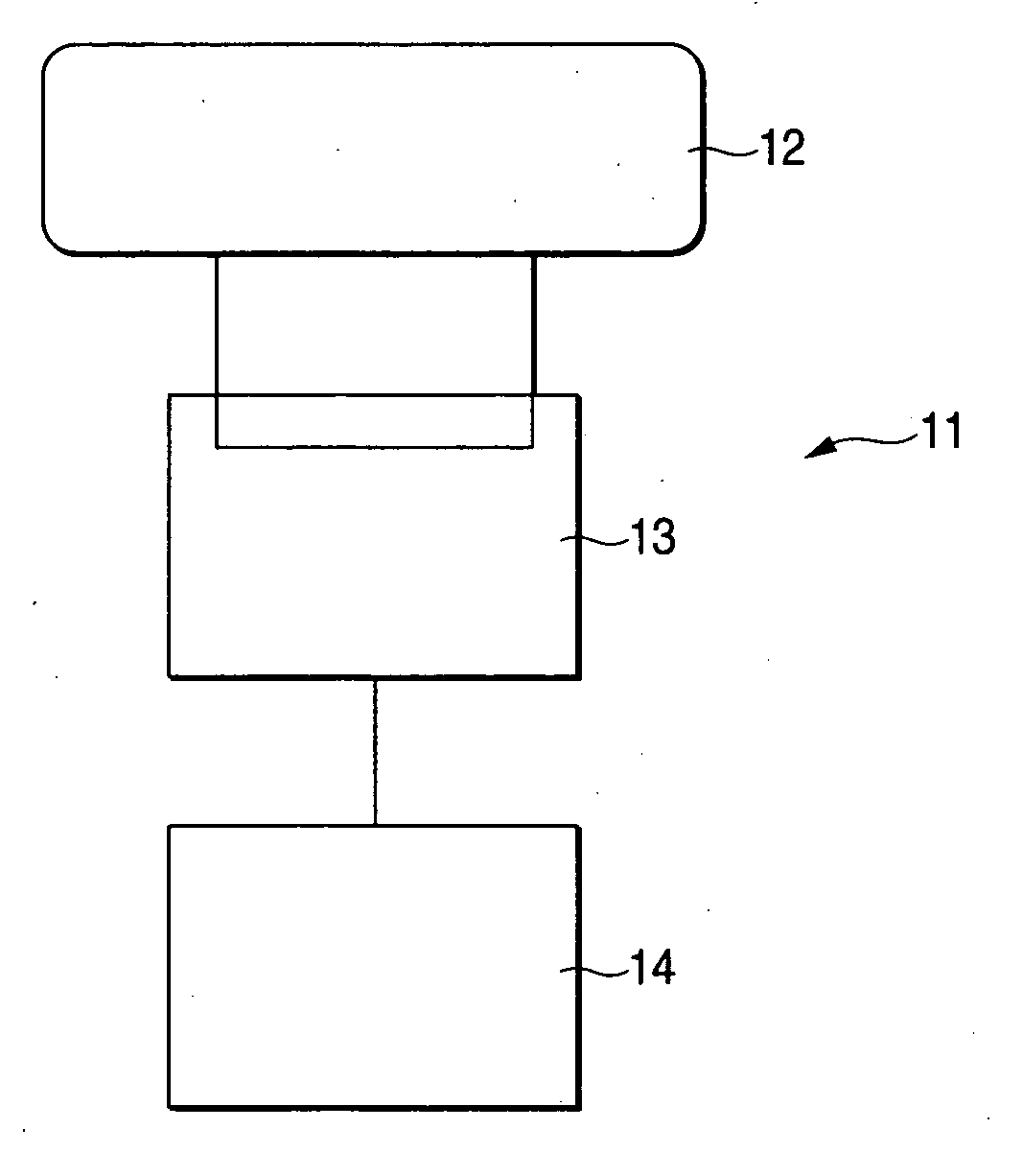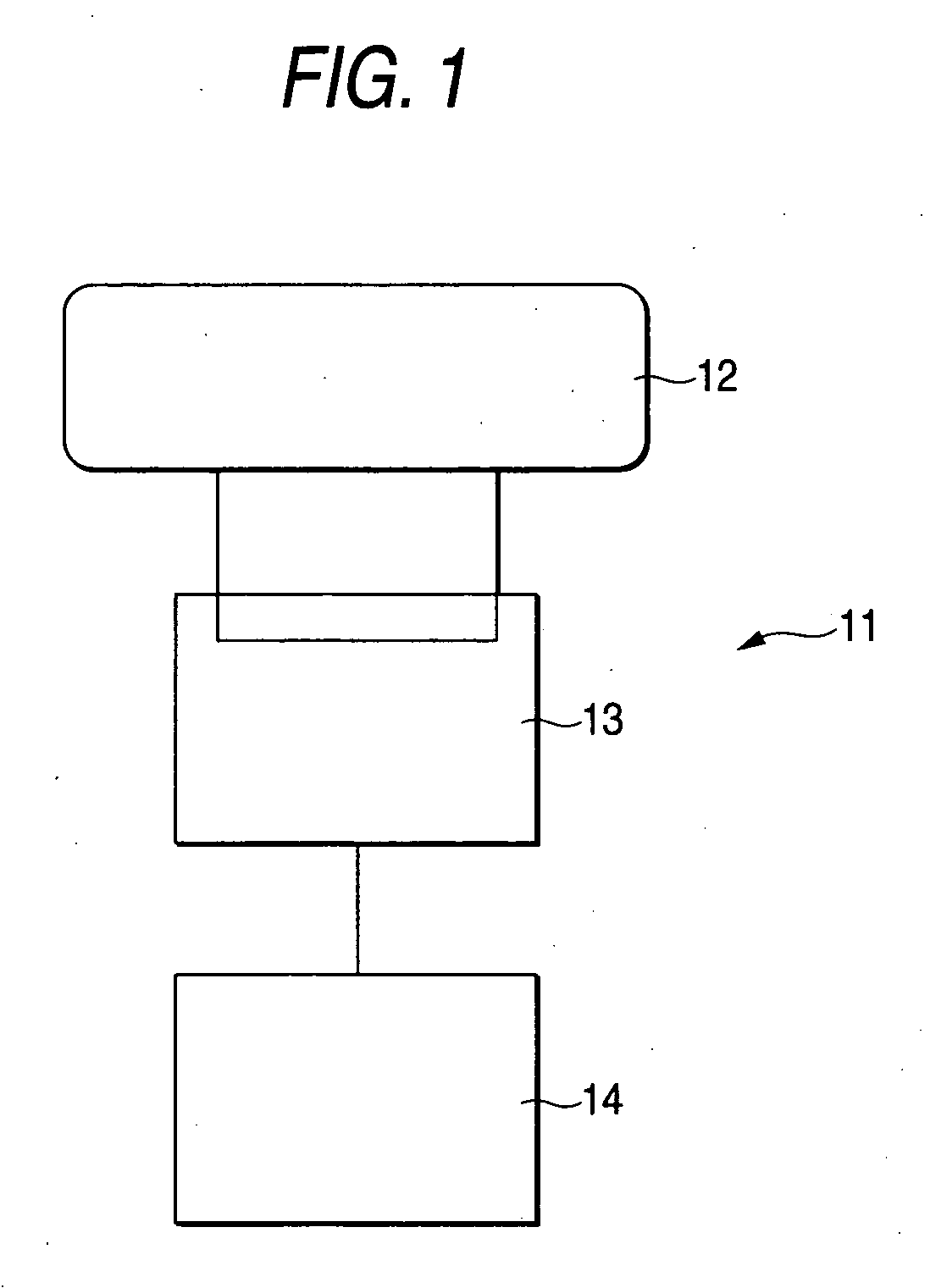Zeolite, process for producing the same, adsorbent comprising the zeolite, heat utilization system, adsorption heat pump, cold/heat storage system, and air-conditioning apparatus for humidity regulation
a technology of adsorption and zeolite, which is applied in the direction of teeth capping, molecular-sieve silicoaluminophosphate, energy input, etc., can solve the problems of insufficient durability and insufficient adsorption capacity in repetitions of use, and achieve excellent durability
- Summary
- Abstract
- Description
- Claims
- Application Information
AI Technical Summary
Benefits of technology
Problems solved by technology
Method used
Image
Examples
example 1-1
[0270] Hydrothermal synthesis and burning were conducted to produce a nitrogen-containing zeolite in the following manner.
[0271] First, 11.53 g of 85% phosphoric acid was added to 28.05 g of water. Thereto was gradually added 5.44 g of pseudoboehmite (containing 25% water; manufactured by Condea) The resultant mixture was stirred. This mixture is referred to as liquid A. Separately from liquid A, a liquid was prepared by mixing 5.56 g of ferrous sulfate heptahydrate, 4.35 g of morpholine, 5.06 g of triethylamine, and 29 g of water. This liquid was gradually added to liquid A and the resultant mixture was stirred for 3 hours to obtain a gel-form starting reactant material having the following composition.
[0272] 0.4FeSO4:0.8Al2O3:P2O5:1.0 morpholie: 1.0 triethylamine:70H2O
[0273] The starting reactant material obtained was introduced into a 200-cc stainless-steel autoclave equipped with a Teflon (trademark) inner cylinder. The starting material was reacted at 180° C. in a stationary...
example 1-2
[0280] A burned product which was a nitrogen-containing zeolite was obtained in the same manner as in Example 1-1, except that the burning temperature and the oxygen concentration in the gas passed were changed to 340° C. and 5 vol %, respectively.
[0281] The burned product obtained had a nitrogen content of 1.7% by weight, a carbon content of 3.1% by weight, and a C / N weight ratio of 1.83. From an XRD pattern obtained in the same manner as in Example 1-1, the burned product was found to have a pure CHA structure (FD, 14.5 T / nm3)
[0282] It had a water vapor adsorption (25° C.) of 27% by weight. The pore utilization factor determined using equation 3 was 0.9. Durability Test 1 was conducted and, as a result, no decrease in adsorption was observed and the crystallinity remained unchanged. The burned product was further examined for the weight loss (g1) and weight loss (g2). The results thereof are shown in Table 1.
example 1-3
[0283] A burned product which was a nitrogen-containing zeolite was obtained in the same manner as in Example 1-1, except that the burning temperature and the oxygen concentration in the gas passed were changed to 400° C. and 0.2 vol %, respectively.
[0284] The burned product obtained had a nitrogen content of 1.7% by weight, a carbon content of 5.0% by weight, and a C / N weight ratio of 2.86. From an XRD pattern obtained in the same manner as in Example 1-1, the burned product was found to have a pure CHA structure (FD, 14.5 T / nm3). It had a water vapor adsorption (25° C.) of 23% by weight. The pore utilization factor determined using equation 3 was 0.77. Durability Test 1 was conducted and, as a result, no decrease in adsorption was observed and the crystallinity remained unchanged. The burned product was further examined for the weight loss (g1) and weight loss (g2). The results thereof are shown in Table 1.
PUM
| Property | Measurement | Unit |
|---|---|---|
| Temperature | aaaaa | aaaaa |
| Temperature | aaaaa | aaaaa |
| Temperature | aaaaa | aaaaa |
Abstract
Description
Claims
Application Information
 Login to View More
Login to View More - R&D
- Intellectual Property
- Life Sciences
- Materials
- Tech Scout
- Unparalleled Data Quality
- Higher Quality Content
- 60% Fewer Hallucinations
Browse by: Latest US Patents, China's latest patents, Technical Efficacy Thesaurus, Application Domain, Technology Topic, Popular Technical Reports.
© 2025 PatSnap. All rights reserved.Legal|Privacy policy|Modern Slavery Act Transparency Statement|Sitemap|About US| Contact US: help@patsnap.com



